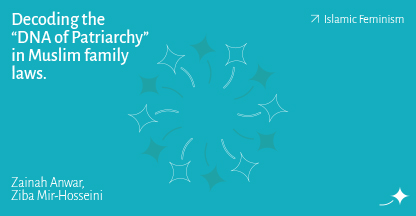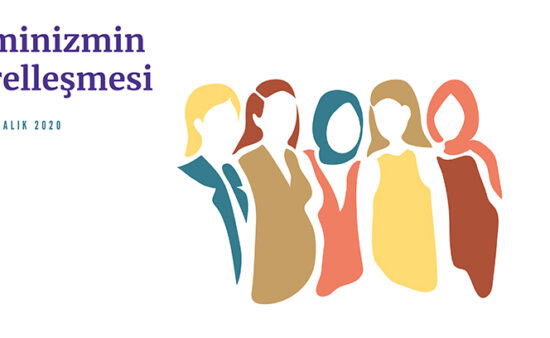December 20, 2020
Stones, Stumblings and Not Giving Up
“We don’t know what is going to happen, or how, or when, and that very uncertainty is the space of hope.”
Rebecca Solnit (2018:22)
There are two stories of struggle in Yırca Village. The first is the struggle involved in the environmental resistance against the coal-fired power plant, and the second is the peasant women’s struggle for existence. I will tell about the stones that women tripped over along the way, about their stumblings and about how they kept going without giving up. I will touch on the space of hope in women’s lives, which was created within a hopeful journey and is tried to be kept alive.
Affiliated to Manisa Soma, Yırca Village, was brought to agenda in 2014 with 6600 olive trees being cut down to build a coal-fired thermal power plant. The villagers who did not want the plant, resisted for fifty days by calling on “Don’t Touch My Olive”, however they could not prevent the cutting of the olive trees, although they managed to stop the construction of the thermal power plant. During the resistance, women centered the struggle, with their presence as well as their forms of disobedience. Them earning their keep with agriculture, women’s labor, the feminization of agriculture and the emotional bond established with olives were reflected to their practices of resistance and to their words.
“We are not allowed to step in our own land.”
“What do you cook, how can you cut the trees?”
“How will you eat this olive?”
“We have nothing but heirloom, what are we supposed to do without soil?”
Women of Yırca tried to protect their lives by resisting the thermal power plant. Due to the existing thermal power plant, diseases such as COPD, asthma and cancer had increased in the village. Women had defended life, as building another plant meant death for them. A woman from Yırca who also suffers from asthma describes the situation in the village with the following words:
Look around, everyone has asthma, COPD. I have it too. Is there anyone who hasn’t! Those who come here tell us: “You shouldn’t stay here, you will get cancer, leave this place.” Where shall we go, do we have anywhere to go? Yet, why would we? This place is our home, our land belongs here!
Women who did not leave their villages planted new olive trees instead of the ones that had been cut down. It will take time for them to grow, of course. While the seedlings of hope were growing, the women created a space of their own in the village as well as a workshop called Handmade and Homemade Yırca Hanımeli. They started to produce olive oil soaps.
The Soap House As The Space Of Hope
34 women came together and turned an old stone house in the village into a workshop and founded the soap house. The main features of this place are; it being founded by the labour of women, being based on solidarity and adopting collective production as a principle. The women who produced and sold soaps built the soap house with the income they had earned. For this reason, we can say that it was founded by women’s labour. We can as well say that women did not individually make financial gains out of soap production until the establishment process was completed. The fact that women did not receive any financial support from their husbands or their household heads is also an important factor. This causes the men in the village remain aloof from the place. Therefore, men cannot take the credit for women’s labour or their earnings and they cannot dispossess labour.
The foundation process of the soap house had been spreaded over time due to various reasons, especially to financial problems. The soap house was built over two years because of transportation problems, the inability to cover the workshop conversion costs due to the low income from the soap sales, and some of the men in the village trying to discourage women. During this time, the soap house took on a new significance for women. Because women took care of all the works, from mortaring to partial demolition work, from whitewashing to cleaning, regardless of the work being heavy or easy. This endeavor had changed the meaning of the soap house for women from being only a job. In addition to all this workload, women also had to deal with the men in the village throughout the process. They try to dissuade women by using expressions such as “You are not capable, you will not succeed, you are wasting your time. Just leave it. This old house is impossible to rectify. This place is too messy to be in.” Despite the villager men’s efforts on dissuading the women, they kept on going with the solidarity between them, without giving up. They stood against the manipulations of men with their solidarity and took the path less chosen by saying: “Whatever we will do, we will solve this.” In this sense, the soap house had turned into a space of hope that women struggled for. For them, the soap house had been the place where they “get away from the house and their troubles, come together and laugh a lot”. The workshop meant more than just a workplace. Even if there would be no production, they would only go there to see each other. Therefore, the space had an aspect that heals women.
With the soap house, women became more visible both in and outside the village. They collectively took place in the public sphere. They got involved in the problems of the village and produced solutions. The soap house still continues to work in the village, and a women’s coffee house was established in order to meet women who do not work in the soap house. In addition to all these, today the board of the village association consists of soap maker women.
Two Struggles: Anger and Joy
What has been tried to be explained briefly are… The long and grueling journey of the women of Yırca. Their practices of struggle coming together with the labour of women labor since 2014. We can separate the experiences of the women of Yırca into two practices of struggle. The first is the environmental resistance that protected the olive trees against the thermal power plant, and the second is the long-term struggle against patriarchy for the establishment and continuation of the soap house. In both struggles, women tried to protect their labour and tried to exist. The first struggle created the ground for the second. For this reason, we can say that the two struggles are practices that reach out to each other. On the other hand, it is seen that these two struggles that bring women side by side have two different feelings. The unifying emotion in environmental resistance was anger, while that of the soap house process was joy. Women’s solidarity has formed the basis of opposition and coping in both emotions. Sevgi Soysal (2016: 160) says the following about emotions: “Ugliness is to narrow down an emotion. Yet an emotion is beautiful as it spreads. Good things don’t fit in tight spaces. Like people’s happiness. More you multiply its essence, the better it would get.”
Local women’s groups are dynamic practices that touch, heal and transform experiences. Quoting Rebecca Solnit, these practices are just like Hope in the Dark. This is not such a frivolous hope. It is a hope that believes in the transformative power of women’s solidarity. It is a hope that continues to have an effect, that grows, expands and opens up space. Just like what we feel when we think of the crowd at the Solidarity Against Beating March organized by feminists in Yoğurtçu Park in 1987 and then look at the crowd on the 8th of March that throngs the squares today. A spark of hope shining in the dark with few people yesterday can evolve into a great movement today over time. When you think about it, we have multiplied our essence by many. We believe in the hope in the dark, which I mentioned at the beginning, which is the space of uncertainty. And we know that for the women of Yırca, who are a part of the hope in the dark, and for the entire women’s movement, “For perfection reached after struggle and strife (Solnit, 2018: 20).”
The first draft of this article, with the title “From Environmental Resistance to the Space of Hope: The Struggle of Women From Yırca”, was presented on December 20, 2020, at the “Localization of Feminism” conference organized by Havle Women’s Association. You can click here to access other texts of our Feminism Localization conference.

